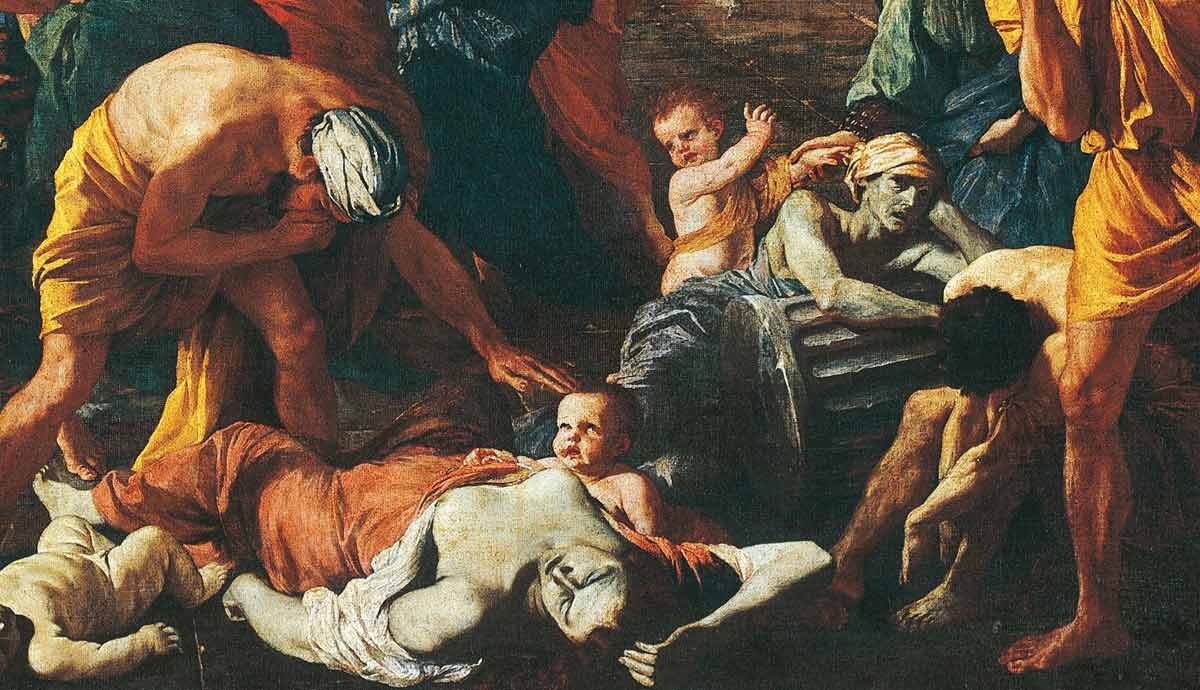
WWW.THECOLLECTOR.COM
How Did the Plague of Justinian Reshape the Byzantine Empire?
The Plague at Ashdod by Nicolas Poussin, 1631, in the Louvre Museum, ParisThe Plague of Justinian was a devastating pandemic that caused havoc across the world between the years 541 CE and 750 CE. The malady was the first recorded outbreak of the bacterium Yersinia pestis. Dubbed the First Pandemic, it inflicted immense human suffering on the Byzantine Empire and crippled it for generations.How Did the Plague Spread Initially?The Plague of Justinian. Source: General Research Division, The New York Public Library, (1843).The Plague of Justinian is believed to have originated in the port of Pelusium in Lower Egypt and then spread across the entire Mediterranean basin. In the spring of 542, its contagion peaked in Constantinople, the Byzantine capital, killing approximately 5,000 to 10,000 people per day. By 543 CE, the plague, which had begun to overwhelm resources in the capital, started to spread wildly across Europe and the Near East. It was the first deadly intercontinental wave of the two-century pandemic. By the end of the scourge, between 25 million and 60 million people had died from the disease.How Did the Plague Affect the Local Economy?Interior of the Hagia Sophia print by Louis Haghe, 1889. Source: British Museum, LondonAt the height of its devastation, the Justinian plague led to the collapse of the agricultural sector in the Byzantine Empire, leading to widespread food shortages due to the loss of farmers. The situation quickly snowballed to become one of the biggest economic crises of the empire. Unfortunately, the woes were compounded by Emperor Justinian Is fiscal policies which led to the abandonment of farms and the disruption of trade networks, which were at the time, the lifeblood of the empire. Justinian spent outlandish fortunes on military campaigns and ambitious building projects.Historically documented occurrences of the first plague pandemic. Source: The Proceedings of the National Academy of SciencesHe, for example, built the grandiose Hagia Sophia, the main church of the Byzantine Empire, and funded wars. At the time, Justinians military sought to reconquer former Roman territories such as North Africa and Italy while at the same time defending its territories against the Sasanian Empire. Of course, some campaigns were successful, like the conquest of North Africa. But the prolonged war in Italy was very draining. Ultimately, the military costs associated with the campaigns, combined with the plagues impact on manpower, severely strained the empires resources.What Were the Immediate Effects on the Military Campaigns?Reconstruction of Constantinople in the year 1200. Source: Vivid MapsBefore the plague began, Emperor Justinian I, who had just ascended to power, aimed to restore the Roman Empire as part of his grand ambitions. At the beginning of his military campaigns, he won a series of early victories in North Africa and Italy. When the plague broke out, however, it quickly became the empires biggest problem, decimating ranks of soldiers within the first year. The Byzantine military was significantly affected by the plague throughout the mid-6th century. With many soldiers and generals lost, the weakened empire adapted a strategy to defend a shrinking border, albeit without sufficient manpower.The plan initially worked and enabled the empire to hold some key territories. The strategy involved supporting armies that fought Persian invaders to the East and Slavic tribesmen in the Balkans, as well as the Avars.In the late 6th century, the Byzantine hold on the West began to weaken due to conquests by some Germanic tribes such as the Lombards. The new invaders quickly resumed their attacks on the weakened nation. A few decades later, Lombard invaders had occupied most of Italy. However, major cities such as Ravenna and Rome remained under Byzantine control.What New Adversaries Took Advantage of the Weakened Byzantine Empire?Theodosian Walls of Constantinople, Byzantine 4th Century CE. Source: Wikimedia CommonsThe Byzantine Empires increasing vulnerability created a huge power vacuum, enabling new adversaries to appear. Although it defeated the Sasanian Empire in 628 CE, the empires military was greatly weakened by the conflict and the Justinian Plague. And soon afterwards, in the 630s CE, the Arab armies which were already growing in strength, began to strike.United by Islam, they launched attacks against the Byzantine Empire, leading to a long, protracted war that spanned centuries. The recurring plague, which had already taken a toll on the Byzantine Empire, caused it to lose huge swathes of its territories. By the end of the 7th century, Islamic armies had seized its richest provinces in Egypt and Syria.How Did the Plague Affect Religion in the Empire?St. Rosalie Interceding for the Plague-Stricken of Palermo by Anthony van Dyck, 1624. Source: Metropolitan Museum of Art, New YorkBy 750 CE, the plague had largely vanished from the Byzantine region. However, the horrifying nature of its lethality had already started to spawn religious doctrines, with many in the Byzantine Empire viewing it as an event that occurred due to divine punishment and as a consequence of sin. As such, it spurred acts of extreme religious devotion. The change caused Christianity in Byzantium to take on a more judgmental tone with greater emphasis being placed on divine judgment and salvation.
0 Σχόλια
0 Μοιράστηκε
134 Views


